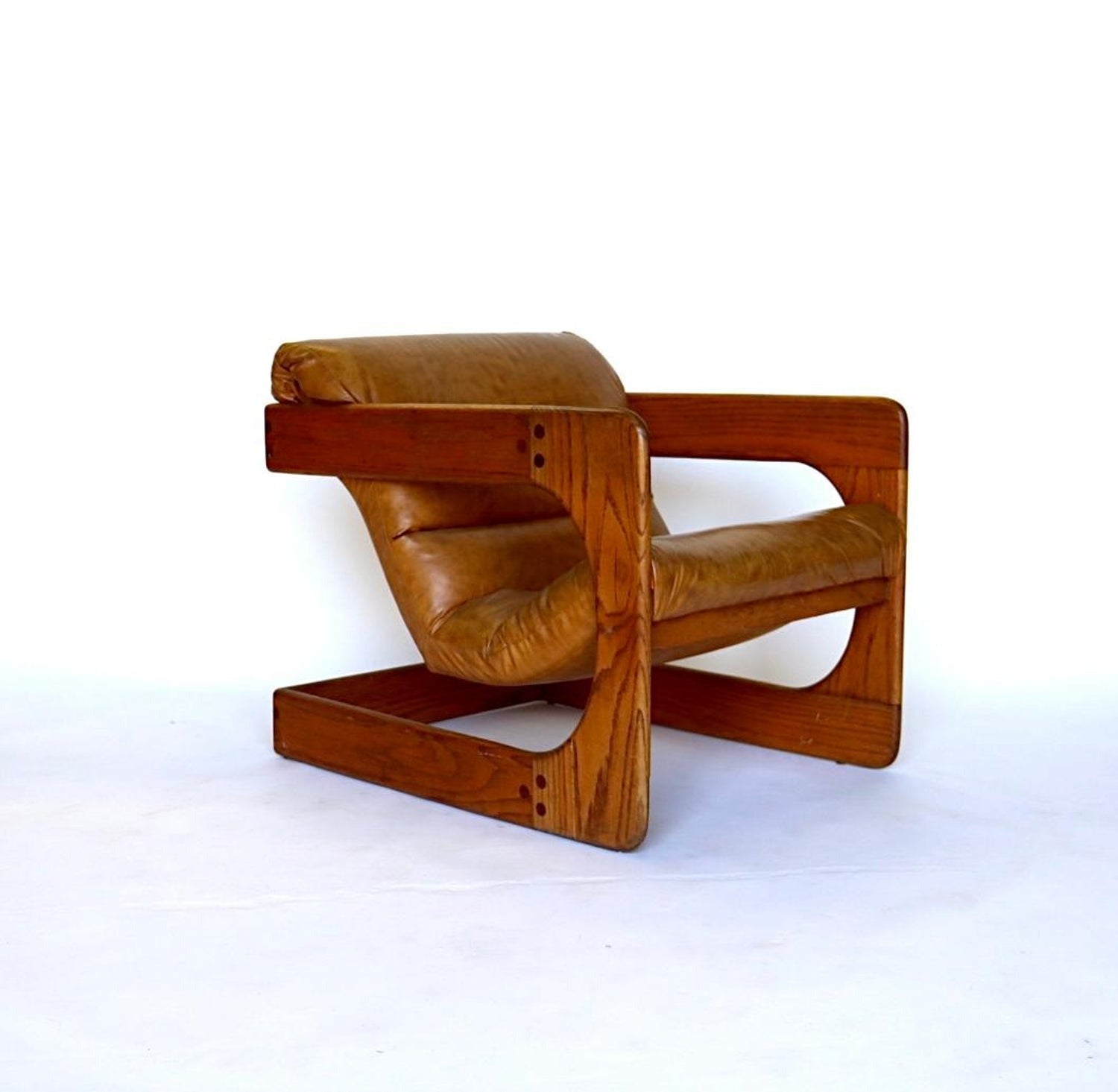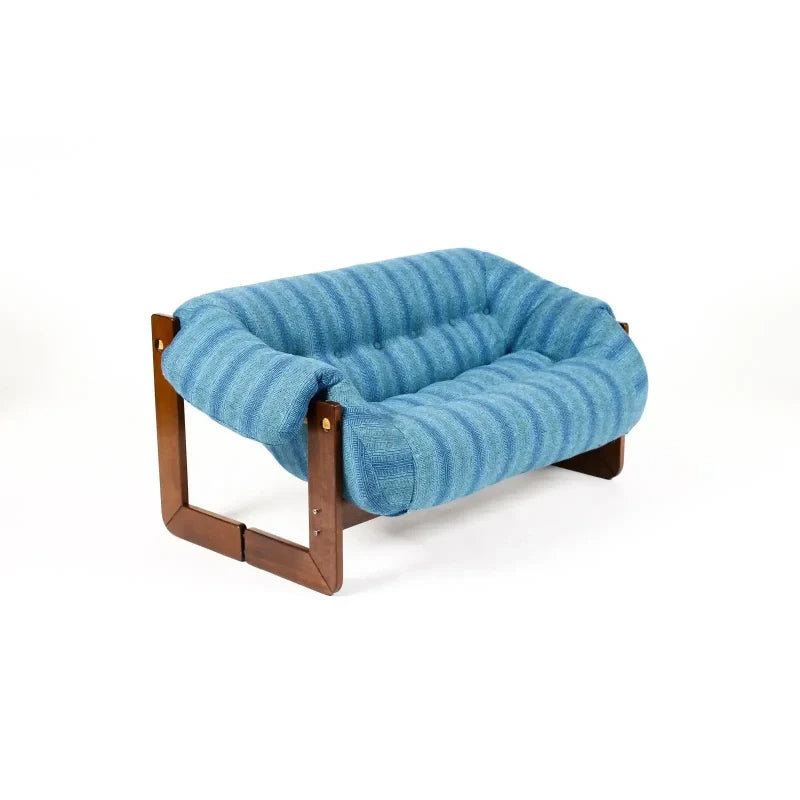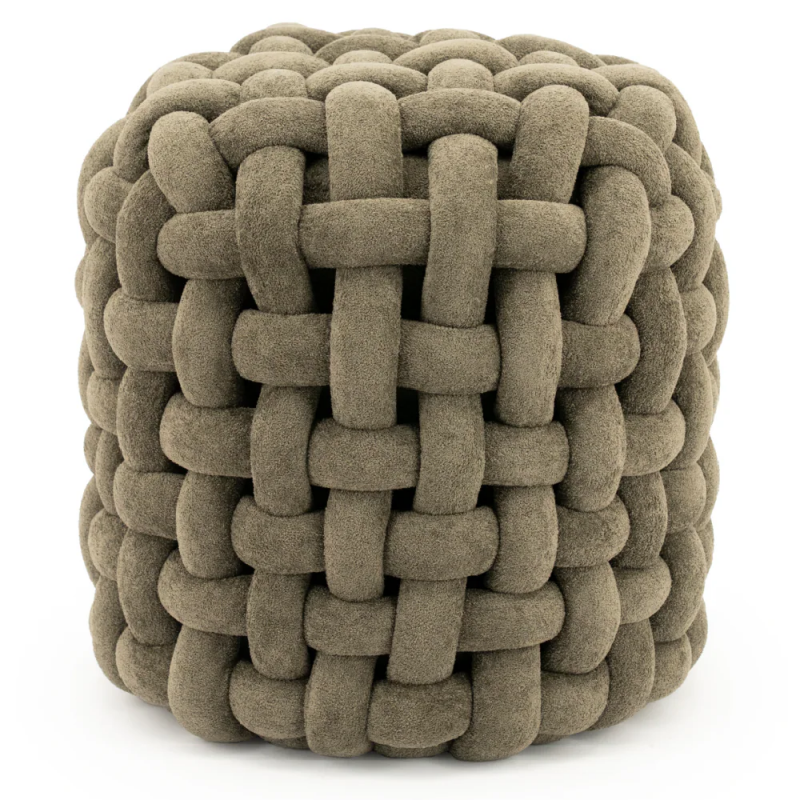Lou Hodges Lounge Chair: A Rare Icon of 1970s California Design
Table of Contents
Introduction: A Chair That Redefined Relaxation
Picture this: sunlight streaming through a California window, a gentle ocean breeze, and the smooth curve of oak supporting your body like a sculpted cloud. That’s the essence of the Lou Hodges Lounge Chair — more than furniture, it’s a philosophy of comfort carved in wood.

Designed in the 1970s by Lou Hodges for the California Design Group, this lounge chair is a piece of design history. Its cantilevered oak frame, rounded edges, and linen upholstery strike a balance between mid-century modern minimalism and handcrafted American warmth.
Who Was Lou Hodges? The Visionary Behind the Design
Lou Hodges wasn’t just a furniture designer — he was a storyteller. Every curve, joint, and grain in his creations told a tale of West Coast innovation.
-
Born in the U.S., Hodges rose to prominence in the 1970s California design scene.
-
His pieces were known for their organic forms, human-centric comfort, and emphasis on solid wood construction.
-
As part of the California Design Group, he helped define a generation of furniture that married sculptural beauty with usability.
Think of him as the Californian counterpart to Denmark’s Finn Juhl — a designer whose furniture seemed alive.

The 1970s California Design Movement
The 1970s were a golden era of creativity in California. The post-war boom had faded, but what remained was an appetite for authentic, handmade craftsmanship.
The California Design Group, of which Lou Hodges was a key member, championed:
-
Sustainability before it was cool — using solid oak and natural fabrics.
-
Humanist design — furniture that hugged your body, not just filled a space.
-
Functional sculpture — every object was meant to be both useful and inspiring.
The Lou Hodges Lounge Chair epitomized this ethos: art that invites you to sit.
Design Philosophy: Where Craft Meets Comfort
We often say that Hodges designed “furniture for living, not just looking.” His lounge chair embodies that perfectly.
-
Purpose-built comfort: The reclined angle encourages relaxation without slouching.
-
Visual harmony: Rounded edges and fluid lines echo the natural shapes of California’s coastline.
-
Architectural integrity: The cantilever design provides strength while feeling weightless.
This chair doesn’t scream for attention — it whispers sophistication.

Cantilevered Magic: The Defining Silhouette
At the heart of this masterpiece is its cantilever structure — a daring feat for a wooden frame.
Instead of using traditional four-legged support, the chair’s oak base flows seamlessly into the seat, creating the illusion that it’s floating. The design not only looks stunning but also provides flexible support, adjusting subtly to the sitter’s posture.
It’s physics and poetry in one — a structural ballet of balance and beauty.
Oak, Linen, and Legacy: Materials That Speak
Each Lou Hodges Lounge Chair tells its story through material choice.
Here’s what makes it truly exceptional:
-
Solid Oak Frame: Durable, grain-rich, and aged beautifully over decades.
-
Linen Upholstery: Breathable, natural, and timeless.
-
Black Ceruse Finish: Highlights the wood grain while adding a striking visual contrast.
Every detail was intentional — nothing ornamental, yet everything ornamental in its restraint.

Rounded Edges, Bold Attitude: A Sculptural Statement
While other mid-century designers leaned toward sharp geometry, Lou Hodges embraced rounded forms. His chair edges are softened like river stones, a design cue that humanizes the modern aesthetic.
Those gentle curves invite touch — a hallmark of tactile design that many modern pieces lack. It’s sculpture you can live with.
Why the Black Ceruse Finish Steals the Show
The black ceruse oak finish is more than a color — it’s an experience.
Cerusing, or liming, involves filling the open grain of oak with a white pigment, but in this case, Hodges flipped the script: a black base highlights the pale veins of the wood, creating visual texture that dances with light.
-
It enhances the wood’s natural storylines.
-
It complements neutral or bold interiors alike.
-
It adds a luxurious depth without being flashy.
In short: it’s the little black dress of furniture finishes — understated, elegant, and endlessly versatile.

Comfort Meets Function: The Lounge Experience
Sit down, and you’ll instantly understand why collectors rave about this chair.
The gentle recline, wide seat, and plush linen cushions make it a dream for long evenings or creative mornings.
-
The ergonomic tilt supports the spine perfectly.
-
The armrests curve in harmony with the body’s natural position.
-
The suspension of the seat creates a subtle springiness.
It’s comfort without compromise — a rare feat in design.
Restoration and Authenticity: Preserving the Soul
Restoration of a Lou Hodges Lounge Chair isn’t just repair — it’s resurrection.
Professionals take great care to:
-
Preserve the original oak frame rather than replace it.
-
Reupholster in authentic fabrics that match the era’s palette.
-
Maintain patina — because the natural wear tells its own story.
A restored piece should look alive, not new. After all, a true classic never ages; it evolves.

Pair It Like a Pro: Complementary Décor Ideas
Wondering how to style this piece? Let’s play interior designer for a minute.
Best pairings include:
-
A low-profile walnut coffee table for balance.
-
Neutral wool rugs that soften the scene.
-
Abstract wall art that echoes the chair’s curves.
-
Warm-toned lighting — think brass or frosted glass.
The key? Let the chair be the star, not just part of the cast.
Comparing Lou Hodges to Other Mid-Century Designers
It’s fun to think of Hodges in the same breath as Eames, Finn Juhl, or Ib Kofod-Larsen — but what sets him apart?
| Designer | Defining Trait | Hodges’ Edge |
|---|---|---|
| Eames | Industrial modernism | Organic handcrafted modernism |
| Finn Juhl | Danish sculptural grace | Californian warmth and earthiness |
| Ib Kofod-Larsen | Elegant minimalism | Bold, tactile realism |
Lou Hodges fused American craftsmanship with European sophistication, creating a design language all his own.
Why Collectors Are Obsessed with Lou Hodges Furniture
Collectors crave Hodges pieces for one reason: they feel personal.
-
Each chair was produced in limited numbers.
-
Many were handcrafted in California workshops.
-
His designs have become symbols of an era — authenticity in a world of reproductions.
When you own a Hodges chair, you’re not just buying furniture. You’re adopting a piece of living art.

How to Identify an Authentic Lou Hodges Piece
Authenticity matters — especially in a market full of “inspired by” copies.
Here’s how to spot the real deal:
-
Signature Cantilever Frame: The hallmark of Lou Hodges design.
-
Rounded Corners: Not machined, but hand-finished.
-
Stamped or Tagged “California Design Group” — often found underneath.
-
Natural Grain Visible Through Finish: Especially with cerused oak.
-
Era-Accurate Proportions: 29.5” H × 26” W × 33.25” D for the lounge chair model.
Owning an authentic Hodges is like owning a handwritten letter from the past — intimate, rare, and priceless.
Caring for Your Lou Hodges Lounge Chair
Proper care ensures this masterpiece lasts another 50 years.
Do:
-
Dust regularly with a soft, dry cloth.
-
Condition wood annually with beeswax polish.
-
Use breathable fabric covers to protect upholstery.
Don’t:
-
Expose it to direct sunlight for extended hours.
-
Use harsh cleaners — mild soap and water are enough.
-
Ignore small scratches; they add character but still need care.
Your chair deserves love — not just admiration.
Investment Value: Why It’s Worth Every Penny
Mid-century furniture has seen a surge in collector interest, and Lou Hodges’ work sits near the top of that wave.
-
Prices for restored pieces have doubled in the last decade.
-
Authentic models often fetch premium values at auction.
-
Unlike mass-produced furniture, each Hodges chair carries heritage and uniqueness.
It’s not just an expense — it’s an appreciating asset with soul.

FAQs
1. What year was the Lou Hodges Lounge Chair designed?
It was designed in the 1970s as part of the California Design Group collection.
2. What materials were used in its construction?
The chair features a solid oak frame with linen upholstery and a black ceruse finish.
3. Is the Lou Hodges Lounge Chair still in production?
No, it’s a vintage piece, though some specialized craftsmen restore or recreate it upon request.
4. How do I verify authenticity?
Look for a California Design Group mark, signature cantilever frame, and accurate proportions.
5. What makes it so valuable to collectors?
Its rare production, timeless design, and handcrafted quality make it a top-tier collectible.



